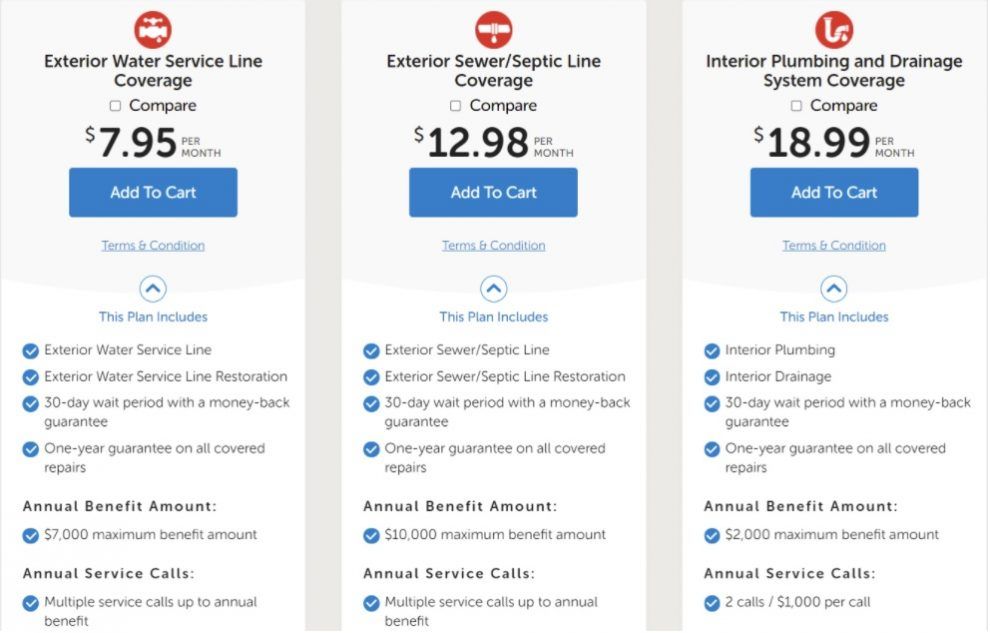There is a lot to consider when deciding how much to charge for your services.
Location, customer demographics, team experience–the list goes on. However, it’s equally important to determine how you will charge, and that’s where the good, better, best pricing method comes in.
We hear from field services businesses who are unsure if this tiered structure will work well for them.
That’s why we’ve put together this post: to help answer the most common questions we’ve been asked.
If you’re ready to dive in, let’s get started!

What is Good, Better, Best Pricing?
Most of us choose services from good, better, best pricing structures daily, even if we aren’t aware of it.
Think of when you’re at the gas station and decide between regular, premium, and super fuel. Or at the movie theater and have the option for a small, medium, or large popcorn.
And we even pick from tiered pricing when we travel–will you be booking a coach, economy, or business class ticket?
Ultimately, good, better, best pricing is a way to present all possible options to customers. The structure starts with the most basic services provided, and then each tier adds incremental value along with a price increase.
So how does this work for a field service business? While it really is dependent on the types of jobs you offer, service contracts are a great way to offer tiered pricing. Here are some great industry examples:
Plumbing

HVAC

Electrical

Of course, when we’re presented with too many options, it can make decisions difficult. For this reason, some field service businesses have reservations when determining if good, better, best pricing is the right fit for them.
That begs the question:
Can it Truly Help My Technicians Sell More?
If you aren’t using this pricing structure, you’re most likely quoting customers a single rate for service. This isn’t a bad method by any means, but it might be making life more difficult for your technicians.
Why? Well, if they offer only one rate and it’s a quote on the higher end, your customer might just say, “The competitor will do it for less.” And odds are, they will find a rival company who can.
That competitor probably isn’t as experienced or professional as you, though. After all, they don’t say “buy it cheap, buy it twice” for nothing.
Since most customers focus on price, it can be difficult for them to appreciate the impact of their choice from a simple estimate.
So, unless your technician is the best salesperson of all time, they may just miss out on the job or upselling opportunity.
With good, better, best pricing, making the sale becomes easier:
- If the customer wants more, upselling to “best” becomes straightforward by highlighting the added value.
- Technicians typically recommend the “better” option.
- If that’s too much, the “good” option is still available.
We’ll go into more detail about this a bit later, but also consider the visual appeal of presenting these three options to a customer. With a singular quote, they’re only seeing one possibility. With good, better, best quotes they’re seeing all of the options and how they compare.
Think of it like an ice cream shop:
- Full sundae: $3.50
- Single scoop: $2.25
- Scoop with a topping: $2.75
Your decision isn’t necessarily based on price alone anymore. You’re thinking, what is the best value?
And when selling, you always want the customer’s focus to be on the value of your product–not the cost.
What this all boils down to is yes, tiered pricing can help your technicians sell more. That is, if you price your service options correctly.
How Does Pricing Work for Good, Better, Best Options?
Firstly, determining how much you should charge can always feel a bit uncertain. You want to price high enough to make a profit, but also fairly, without taking a loss.
When you offer good, better, best pricing it’s especially important to be confident, because these flat rate fees won’t be negotiable in most cases.
That’s why we’ve put together our best tips for structuring your tiered pricing.
1. Decide on the Packages You Will Offer
Your business is awesome, and you already offer a ton of great services. Maybe you do both heating and plumbing, or heating and electrical, or commercial and residential work. It might be tempting to want to offer more than three plans, and in some cases it may make sense.
However, it’s important to keep in mind that offering too many options may overwhelm customers. Research has shown that the more choices offered, the less likely consumers are to buy.
In this particular study, when presented with 6 options, 30% of customers made a purchase. When given 24 options, only 3% opted to buy.
As a result, we wouldn’t recommend offering many more than three plans. Instead, really focus on what you’re going to include in your good, better, best pricing options.
When deciding on the services included in each plan, consider what will have the widest appeal. Intentionally put together packages by grouping services that go well together.
The idea is to make each plan an option for your customers, with more value added at each increased price point. Don’t be tempted to make your “good” package completely unsuitable so buyers have to pick your “better” option. They’ll pick up on this quickly–and it probably won’t go over well.
Rather, really focus on creating packages with your customer in mind. What will they find valuable about each pricing option?
2. Determine Who Your Good, Better, Best Pricing Options Are For
Secondly, does your field service business target high-end spenders? Or do you cater to more budget-conscious customers? And what do your customers really want from your business?
Do your customers care more about experience or cost? Or do they make decisions based on a balance of both?
Understanding who your customers are allows you to tailor your offerings to meet their exact needs.
This makes your good, better, best pricing model even more effective.
Example: If your customers value speed of service:
- “Good” plan: standard two-day service
- “Better” plan: guaranteed service within 24 hours
- “Best” plan: same-day service promise
Not sure who your target customer is?
- Look at past jobs, notes, and conversations to identify patterns and preferences
- Start by reviewing your customer database
This can help you to create a persona. See what trends you can identify, and then start implementing them in your good, better, best pricing.
3. Service Packages + Target Audience = Your Prices
You need to complete steps one and two before getting to three–only then can you accurately price your services. Before thinking about what you’ll charge, you need a concrete understanding of each service you’re offering and the value it provides for your target customer.
If an in depth breakdown on how to charge for services would be helpful, you can download our pricing for profit guide. Otherwise, we’ll turn to expert Rafi Mohammed, founder of Culture of Profit, for his guidance on good, better, best pricing.
He advises not to price your “good” plan more than 25% below your “better” package. And for your “best” plan, Rafi recommends that it does not exceed the “better” package by more than 50%.
For example:
- If your “better” package is $500, then:
- Your “good” plan should be at minimum $375
- And your “best” option should be at maximum $1000
If you’re diligent in your planning and research for your good, better, best pricing structure, you’re sure to see positive results. By creating comprehensive packages focused on what your customers really want, it will be easier for your technicians to sell them on the value of your plans.
There are many ways to present these options, though. Which is why so many field service companies ask…
What’s the Best Way to Market Tiered Pricing?
As good, better, best pricing becomes increasingly popular, it’s important to differentiate yourself from competitors using this structure. And we don’t just mean by offering better prices or more services; how you present your tiered prices matters.
Consider how you’ll visually design your packages. If you’ll showcase them on your website, make sure the plans are featured on the same page.
Don’t make customers click from one tab to another trying to understand the differences in each option.
If you create a chart showcasing each plan, make sure the services in each one match up.
It can be confusing if all three plans offer a free diagnostic, but it’s at the top of the “good” column and the bottom of the “better” column. This can easily confuse customers and detract from the value of the plans.
Also be mindful of the words you include in your good, better, best pricing. For example, if you work with higher-end customers, alternative phrasings like “standard, premium, deluxe” may have more of an impact.
Even just including “Our Most Popular Option!” under the “better” heading may be what convinces a customer it’s the plan for them.
And, perhaps most importantly, don’t hide your packages! If you plan to use good, better, best pricing options for service contracts, make sure to have a dedicated page on your website for this.
Advertise the awesome options you can provide, don’t leave it a mystery for your customers to solve.
By showcasing your offers on your website and giving customers all the information upfront, it will be easier for them to determine if they want to purchase your services. It’s an easy way to generate more sales with minimal effort!
Other Common Pricing Strategies

The Good, Better, Best pricing structure is amazing in the right situation. If you’re looking for something a bit different, take a look at the other pricing strategies listed below.
Value-Based Pricing
Using a Value-Based Pricing model may require some additional market research, but its a great tool for figuring out what people are willing to pay!
Once you gather enough information on your audience, you’ll understand how they view your product (or how much they want to pay for it) and can set the price accordingly.
Competitive Pricing
Competitive Pricing is exactly what it sounds like – setting your prices in line with the competitions. This is a good strategy for businesses that are just breaking into a new market.
While this doesn’t leave a lot of room for pricing adjustments, you’ll get valuable information on how your product performs compared to a competitors.
Price Skimming
The Price Skimming strategy is commonly used in the video game industry. Offering new products (or games) at the highest possible price and lowering them over time once the initial rush to get the product slows down.
You’ll need a specific plan and type of service or product to take this approach, but its great for maximizing sales.
Undercut Pricing
Undercut Pricing is an effective strategy for businesses looking to break into a market or increase the number of sales they make.
You’ll need a product or service that’s frequently used by society; and some good marketing behind it to prove why the lower price for your product will be just as good as the rest (you get what you pay for).
Percentage Pricing
Percentage Pricing is one of the most straightforward and effective strategies. After calculating out the costs of producing a product or service, just add a percentage to the total to get your sale price.
For example, let’s say a product cost $12 to make and the company producing them adds 25% on top of that to ensure they always make profit. The sale price for each $12 product would be $15 dollars, resulting in a $3 profit for every product sold.
Selling More with Good, Better, Best Pricing:
All in all, this pricing structure is a great way for field service businesses to sell more. By presenting customers with options, they can evaluate the value of each one and what suits their needs most.
When you have a comprehensive sales platform to manage your options and send proposals to clients, it takes the pressure off of your technicians and enables them to become advisors versus salespeople—and that’s one of the best ways to sell.
It allows them to demonstrate their knowledge and recommend what will be best for the customer, without coming across as pushy or trying to upsell them on services they don’t need.
It’s a model based on education and transparency, which is why it works so well. To ensure success, make sure you keep your packages customer focused and comprehensive. Tailor your plans based on research, and don’t just wing your pricing.
And once you have your good, better, best plans ready to go, make sure you’re using field service management software to streamline your operations and increase revenue!










